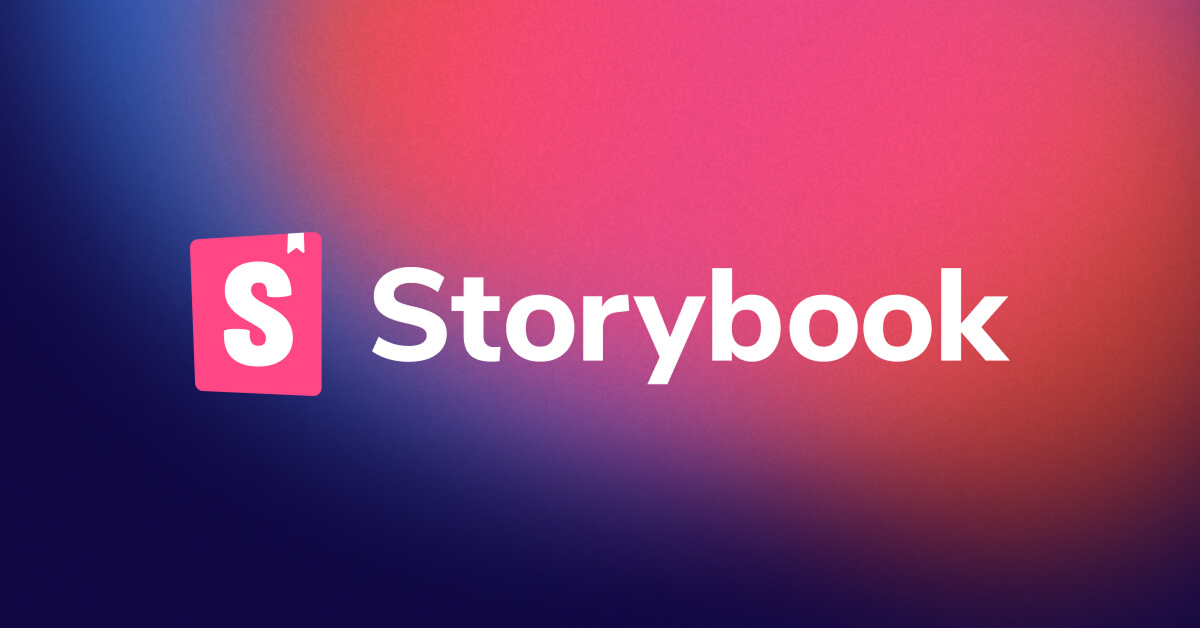
Details about Storybook - Frontend workshop for UI development
Open-source tool for building and documenting UI components.
Ideal for developing isolated components in a UI library or design system.
Supports major frameworks like React, Vue, Angular, and more.
Provides an interactive interface for testing and showcasing components.
Makes it easy to share components with designers, developers, and stakeholders.
Enhances collaboration in design systems and component-driven development.
Includes addon support for accessibility testing, performance monitoring, and more.
#What is Storybook?
Storybook is an open-source tool designed to help developers build and document UI components in isolation. It's widely used for developing user interfaces with component-driven development (CDD) and helps teams work more effectively by providing an interactive environment where components can be created, tested, and shared without running a full application.
By providing a dedicated space for components, Storybook allows developers to create reusable, customizable, and well-documented UI elements, ensuring consistency across large applications. Whether you’re building design systems or managing a UI library, Storybook simplifies the process by providing an interactive playground to showcase components, test different states, and ensure they work seamlessly.
#Features ⚡️
Component Isolation: Work on individual UI components in isolation without needing to set up the entire application.
Interactive Interface: See your components in action with an interactive user interface, where you can interact with the component, adjust props, and view different states.
Cross-Framework Support: Supports major frameworks like React, Vue, Angular, and more, allowing you to use Storybook in virtually any modern frontend project.
Documentation: Automatically generate documentation for components and their usage, making it easy for team members and stakeholders to understand how components are structured and used.
Addons: Storybook comes with a wide variety of addons, such as accessibility checks, performance monitoring, and design validation, allowing you to enhance your workflow.
Live Preview: Preview the component in real-time as you modify its code, ensuring that your design and functionality align with your expectations.
Version Control: Easily version control your components to ensure that changes to the UI elements are tracked and managed properly.
Collaboration: Share Storybook instances with team members, designers, or stakeholders to get feedback and ensure everyone is aligned on the design and functionality.
#Pros and Cons
#Pros ✅
Faster Development: By working on components in isolation, developers can iterate faster and more efficiently without needing to worry about the larger application setup.
Improved Collaboration: Storybook makes it easier to collaborate with designers and stakeholders, providing an interactive and visual way to review and approve UI components.
Better Reusability: With Storybook’s focused environment for component development, it’s easier to create reusable components that can be shared across different projects.
Enhanced Documentation: Automatically generated documentation for each component makes it easy for developers and designers to understand how to use the components effectively.
Cross-Framework Compatibility: Whether you're using React, Vue, Angular, or other frameworks, Storybook works seamlessly across different environments, ensuring consistency in your components.
#Cons ⚠️
Learning Curve: While Storybook is an excellent tool, there can be a learning curve for beginners, especially for those new to component-driven development.
Not Ideal for Full App Testing: While Storybook is great for building and testing isolated components, it may not be suitable for testing complex app workflows that require multiple components interacting together.
Setup Time: Setting up Storybook for a project might take some time, especially for larger projects with many components.
#Included Components - Templates
Storybook comes with a wide variety of templates and example components that make it easy to get started:
Buttons: Customizable button components with different states (default, hover, disabled).
Forms: Pre-designed form components, such as input fields, checkboxes, radio buttons, and dropdown menus.
Modals: Dialog components that can be used to display information or prompts.
Navigation Bars: Responsive navigation bars with dropdowns, collapsible menus, and mobile views.
Cards: Flexible card layouts for displaying content in a grid-based format.
Icons: Easily customizable icon components for consistent visual language across the app.
Tooltips: Components for showing additional information when a user hovers over an element.
#Pricing 💵
Storybook is completely open-source and free to use. It is available for download via npm or yarn, and there are no associated licensing fees for its core features. However, for businesses looking for premium features like enterprise-level support, custom integrations, or private hosting, paid plans may be available through Storybook’s enterprise offerings.
#Integrations 🧰
Storybook integrates seamlessly with many modern web development tools and frameworks:
React: Full support for React components and hooks.
Vue: Easily integrates with Vue.js to create interactive components.
Angular: Use Storybook for Angular to build component-driven UI libraries.
Tailwind CSS: Storybook works seamlessly with Tailwind CSS for building utility-first UIs.
Jest: Integrates with Jest for component testing, ensuring that your UI components work as expected.
Chromatic: Storybook integrates with Chromatic for visual testing and UI review.
Frequently Asked Questions
What is Storybook used for?
Storybook is used for building, testing, and documenting UI components in isolation. It’s ideal for creating design systems and reusable component libraries for web applications.
Is Storybook free to use?
Yes, Storybook is completely open-source and free to use. It’s available for integration into React, Vue, Angular, and other web development frameworks.
Can I use Storybook with my existing app?
Yes, you can integrate Storybook into any project, and it works alongside your existing codebase without requiring significant changes to your app.
How does Storybook help with UI development?
Storybook helps developers by providing an isolated environment for building and testing individual components, improving efficiency and promoting reusability.
Storybook - Frontend workshop for UI development
It is a frontend workshop for building UI components in isolation.
Resource Types:
UI Kits :
Shadcn UITechnology Stack :
Have a product?
Submit your Shadcn product to AllShadcn, get featured, and drive genuine traffic while showcasing your work to the world. Turn your creativity into revenue and begin selling today! 🚀




